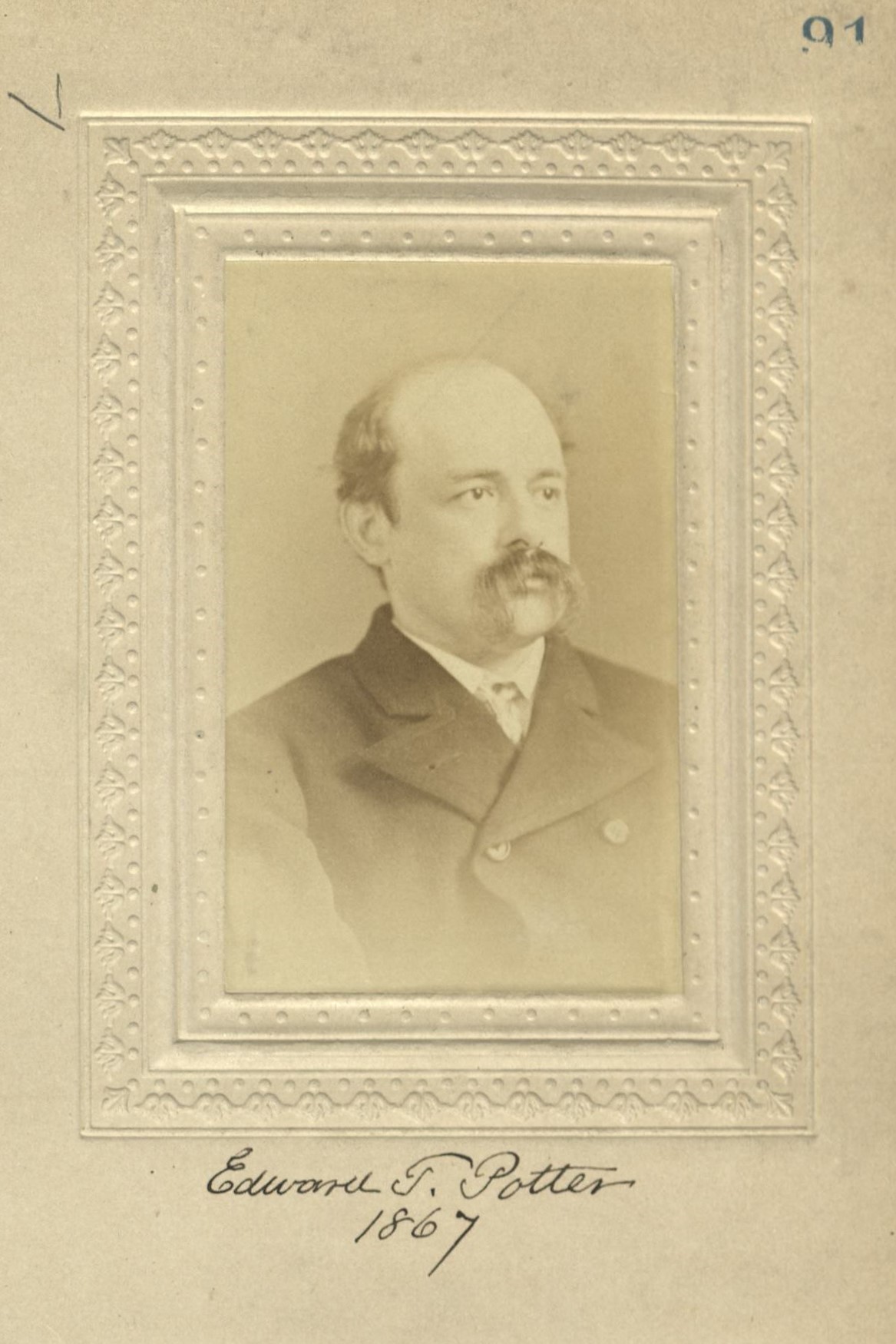Architect/Composer
Centurion, 1867–1904
Born 25 September 1831 in Schenectady, New York
Died 24 October 1904 in New York (Manhattan), New York
Buried Saint Georges Episcopal Church Cemetery , Schenectady, New York
, Schenectady, New York
Proposed by William M. Evarts and Lewis M. Rutherfurd
Elected 5 October 1867 at age thirty-six
Archivist’s Note: Brother of Clarkson N. Potter, Henry Codman Potter, and Howard Potter; half-brother of William A. Potter; brother-in-law of Launt Thompson
Century Memorial
Edward Tuckerman Potter came of a family, which The Century has reason to hold in especial regard. A graduate of Union College, of which his grandfather, Dr. [Eliphalet] Nott, was the well-known President. He chose the profession of Architecture in which he did work of recognized distinction. The Church of the Heavenly Rest, in this city, being an example of his early work in which effect of marked excellence is obtained under peculiar difficulties. St. John’s Church, Yonkers, and the church and parish house at Hartford, Conn., constituting the Colt Memorial, show his riper style and his peculiar mastery of color harmony through the use of stone of various hue. Mr. Potter retired sometime before his death from the active practice of his profession, passing much of his time abroad and for the last decade, at his home in Newport. He had a strong love for music and was a composer in a variety of forms, the beauty and originality of which are recognized by experts. But during years of apparent leisure he devoted much time and labor to the study of the complex problem of better housing of the poor. Of this interesting phase of his career, his friend, Mr. A. J. Bloor, writes: “ He was a great inventor, who had devoted most of his adult years not to securing commissions giving him opportunities to gratify his taste and talent for the production of fine architecture, ecclesiastical, domestic or (and best paying) the financial sky-scraping variety, but for the solution of the momentous problem of how to render feasible the providing of proper homes for the vast majority of all communities, those not rich, the poor, the very poor—homes, whether urban, suburban or rural, by which everything possible, under the unavoidable restrictions of expenditure, local ordinance, site, environment, etc., for the supply of sunlight, thorough draught, heating, cooling and ventilating of quarters, with the privacy and convenience of their occupants, has been thoroughly thought out and planned.”
The same authority describes Mr. Potter’s chief invention as “a system of what may almost be called instantaneous building by indefinite multiples of unity of manufactured building materials,” and predicts for it an effect little short of revolutionary. Those who knew Mr. Potter’s profound attachment to high ideals and the fidelity and unselfishness with which he pursued them, may well see in the realization of his friend’s prediction the reward that would be most satisfying to his loyal and lofty spirit.
Edward Cary
1905 Century Association Yearbook

